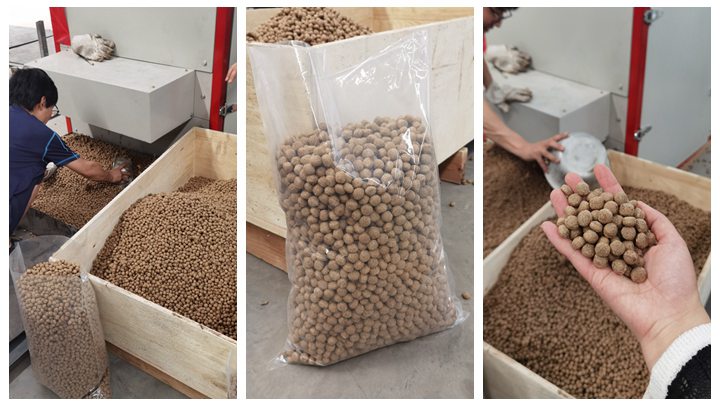.jpg)
The proteins in the soil are broken down by microorganisms to produce carbon dioxide (CO2), energy, water, plant nutrients, and resynthesized organic carbon compounds such as nitrogen.
.jpg)
07 Energy saving; 08 Easy to clean with Production Plants for Animal Feed, Pet Food and Fish Food Animal Feed production plant 5 Ton/h Modular animal feed ...

Alaska Fish Emulsion Fertilizer 5-1-1 Concentrate offers an OMRI-listed, deodorized fish-based formula that delivers gentle yet effective organic nutrients to nourish all types of plants without risk of burning, earning praise from customers for its impressive results and value.
.jpg)
Apr 1, 2022 · This aquatic plant is known to be a great potential alternative feed ingredient as it is native species in some Asian countries and by utilising local food sources it can save cost. According to Ganghadar et al. (2015) the cost of feed was lowered by 24.48% when azolla was added to the diet (Rs per 100 g biomass; Rs: Indian rupee, INR; 1 INR
.jpg)
Jul 1, 2021 · Fish and meat production and processing will grow drastically in the coming decades. In aquacultural systems, insects are gaining interest as feed to provide a sustainable alternative to the fishmeal paradox, whose production leads to high consumption of resources and negative environmental impacts. Within the scope of this study, the production of fish feed from Hermetia illucens larvae and
.jpg)
Oct 17, 2023 · Microbial fermentation can help reduce the levels of these anti-nutritional factors, improving the nutritional value and digestibility of the feed. It is an energy-efficient process compared to traditional feed production methods. It can utilize food waste, which is rich in organic matter, as a low-cost and abundant feedstock.
.jpg)
Feb 24, 2021 · The plants are fed a nutrient solution that can come in many forms, but usually, it’s water with a mix of fertilizers and minerals or trace elements that plants require for food. Less Water At a large scale, hydroponics consumes less water — up to 90% less than traditional field crop watering methods — because most hydroponics use
.jpg)
Worldwide, an estimated 2 billion people live primarily on a meat-based diet, while an estimated 4 billion live primarily on a plant-based diet. The US food production system uses about 50% of the total US land area, 80% of the fresh water, and 17% of the fossil energy used in the country. The heavy dependence on fossil energy suggests that the US food system, whether meat-based or plant-based
.jpg)
Skretting Stokmarknes produces extruded fish feed for salmon and trout and operates the most energy-efficient fish feed plant in Nutreco. This great performance is the result of years of continuous improvement in processes and operations – taking small steps that added up to major progress over time.
.jpg)
May 22, 2023 · Current research focuses on implementing an Energy Management System (EnMS) in a seafood processing plant that supports energy savings at low cost.
.jpg)
Oct 26, 2015 · Conclusion: Feed vs. Food. Regardless of the exact numbers, producing crops (soy, corn, wheat, etc.) for animal feed is many times more resource-intensive than using crops for direct human consumption. While there are perilous trade-offs related to fuel vs. food, a more serious concern for a variety of reasons is feed vs. food.
.jpg)
.jpg)
Energy-Efficient Operations: Modern fish feed pellet machines consume less energy, reducing greenhouse gas emissions linked with energy production. Promotion of Circular Economy : By facilitating the use of agricultural by-products in feed, pellet machines promote a circular economy, ensuring waste gets utilized productively.
.jpg)
Jun 23, 2023 · Introduction Floating fish feed plays a vital role in the aquaculture industry by providing essential nutrients for fish growth and health. This article explores various aspects of floating fish feed, including its manufacturing process, ingredients, sustainable applications, novel proteins as a solution, benefits of automatic fish feeders, and floating fish feed prices in India.
.jpg)
Jan 22, 2024 · Primary producers use energy from the sun to produce their own food in the form of glucose, and then primary producers are eaten by primary consumers who are in turn eaten by secondary consumers, and so on, so that energy flows from one trophic level, or level of the food chain, to the next. The easiest way to demonstrate this energy flow is